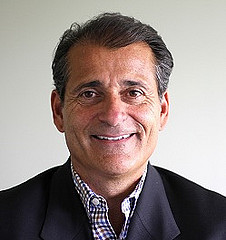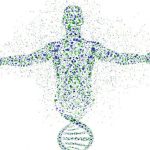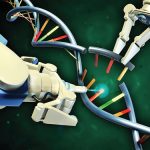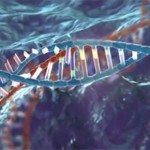Dr. Yochinori Ohsumi Wins Nobel Peace Prize for Medicine
Frank Magliochetti Report
Yoshinori Ohsumi is the sole winner of the 2016 Nobel Prize in Physiology or Medicine. Dr. Ohsumi is a cell biologist who specializes in autophagy, which is the process cells use to destroy and recycle cellular components the cells no longer use. Ohsumi has worked tireless for decades to elucidate the processes behind autophagy. Because of Ohsumi’s work in the 1990s, scientists can now explore the importance of autophagy in 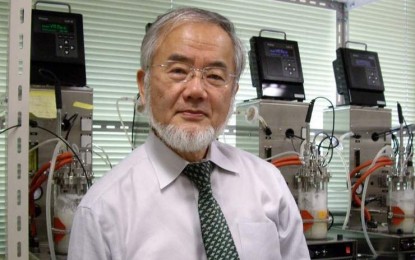 a number of physiological processes, such as the body’s response to infection or adaptation to starvation.
a number of physiological processes, such as the body’s response to infection or adaptation to starvation.
Scientists of the 1950s observed a special cellular compartment, known as an organelle, which contained enzymes that digest carbohydrates, proteins, and fats. One type of specialized compartment, or lysosome, works somewhat like a furnace to break down unwanted cellular debris.
Researchers of the 1960s found large amounts of cellular content inside lysosomes, which suggests cells have a strategy for transporting large cargo to the lysosome. Further investigation revealed a new type of structure transporting cellular cargo to the lysosome. molecular level. Nobel laureate Christian de Duve coined the term autophagy, which means “self-eating,” in 1963 to describe this transport process.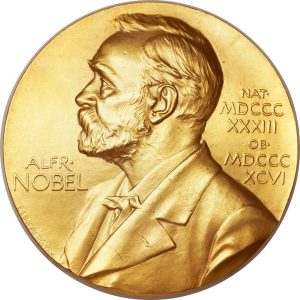
In the 1970s and 1980s, researchers worked to understand another cellular system used to degrade proteins. This other system, known as the Proteasome, degrades proteins one at a time. The mechanism did not explain how the cell disposes of larger protein complexes.
In a series of experiments in the early 1990s, Dr. Ohsumi used baker’s yeast to identify the genes responsible for autophagy. Mutations in these genes can cause disease and the very process of autophagy contributes to the development of several medical conditions, including cancer and disease of the nervous system.
The scientist then went on to shed light on the underlying mechanisms in autophagy in yeast then showed that a similar mechanism occurs in human cells. His discoveries led to a new of understanding how cells recycle their content.
A Groundbreaking Experiment
Yoshinori Ohsumi worked in a number of research areas, but decided to focus on protein degradation in an organelle that corresponds to the lysosome in human cells, known as the vacuole. Researchers like Dr. Ohsumi frequently use yeast cells in research because these cells are easy to study. Yeast cells are particularly useful for indentifying genes important in complex cellular pathways.
While yeast cells are easy to study, they do present a challenge in that the cells are small, which makes their inner structures difficult to distinguish with a microscope. Because of this, Ohsumi was uncertain whether yeast cells even participate in the autophagy process. He reasoned that, if he could disrupt the degradation process while the autophagy process was active, he would be able to see cellular content slated for degradation building up within the vacuole with his microscope.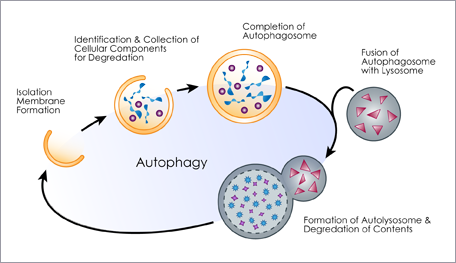
Ohsumi cultured mutated yeast lacking the ability to degrade cellular waste while stimulating autophagy by starving the cells. Within hours, the vacuole filled with cellular content that had not degraded. This experiment proved that autophagy exists in cells. More importantly, the discovery gave Ohsumi a way to identify and characterize key genes involved in the autophagy process. Dr. Ohsumi published his results in 1992.
Next, Dr. Ohsumi exposed yeast cells to a chemical that randomly caused mutations in genes then induced autophagy. This allowed Ohsumi to identify the genes necessary for autophagy. In subsequent studies, he was able to characterize and research the proteins encoded by these genes. Dr. Ohsumi was able to show that a cascade of proteins and protein complexes controlled the autophagy process.
Thanks to the work of Dr. Ohsumi and other scientists, we now understand how autophagy controls important physiological functions that involve the degradation and recycling of cellular components.
Source:
https://www.ncbi.nlm.nih.gov/pubmed/1400575
Frank Magliochetti is Managing Partner for Parcae Capital.
-
North Andover, Massachusetts
This column of posts is directed at the Healthcare Industry. Frank plans to release a new site dedicated to the industry. He currently assists companies who are building, restructuring, transforming and resurrecting there business’s. An example of his client base are, Xenetic Biosciences , IPC Medical Corp, Just Fellowship Corp, Environmental Services Inc., Parsons Post House LLC, ClickStream Corporation as well as having a business talk radio show; The Business Architect on the URBN network.
